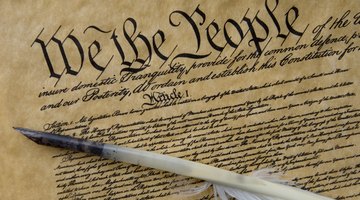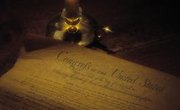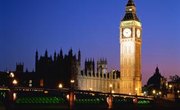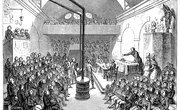While the U.S. Constitution is frequently lauded as a hallmark in democratic government, the document actually reflects significant distrust of democracy. When the Founding Fathers drafted the Constitution, they built a republican form of government that was meant to limit the excesses of democracy. Safeguards included institutions like the electoral college, the Senate, checks and balances, and unelected courts.
Electoral College
In a democracy, voters would directly elect the country's leader on a one-person, one-vote system. The U.S. Constitution, however, established the electoral college for selecting the president. The Founding Fathers did this primarily out of distrust for majoritarian democracies. At the time the Constitution was written, the 13 American states were vastly different from each other both in size and in culture. It was difficult for a citizen of Massachusetts, for example, to understand a presidential candidate from South Carolina. As such, the Founders feared that if the president were directly elected, voters would simply vote for a "favorite son," a candidate from their home state. This fragmented process would lead to a consistent victory from someone from a large state. To mitigate this problem, the Founders created the electoral college, which allowed each state to choose a certain number of electors -- in a process each state determined on its own -- to select the president. While this process has changed slightly since, the same basic premise -- that a direct election wouldn't work -- still remains.
Senate
While the House of Representatives was set up to be democratically elected, the Founding Fathers feared that this democratic House would get out of hand. One of the primary issues that the Founders distrusted about democracy was its tendency towards a "tyranny of the majority." In this situation, a small majority -- just 51 percent -- could control all the authority of the government. The Founders reasoned that this was a dangerous situation in a country as diverse as the United States. As such, they established the Senate as a way of checking the potential tyranny from the House. The Senate was initially designed to be appointed by the legislatures of each state. This, the Founders thought, would insulate the Senators from the interests of voters, because they would never be chosen through an election.
Checks and Balances
In a democratic government, majority decisions would always determine the course of action. The U.S. Constitution, on the other hand, established a careful system of checks and balances meant to thwart majority rule. For example, though the president is not directly elected, he has the authority to veto legislation passed by both houses of Congress. Likewise, the Congress can oversee the actions of the president and approve or reject some of his actions, like the appointment of government officials or the signing of treaties. This back-and-forth system was meant to restrain government, and prevent any one faction from dominating. This idea came directly out of the Founders' fear of democracy and its tendency to create a tyrannical majority.
Unelected Courts
In some democratic countries, courts are overseen by elected officials. The U.S. Constitution, however, specified that Supreme Court justices would be appointed by the president and confirmed by the Senate. This is especially significant because the Senate and the president are the two least democratic branches of government, because neither was initially designed to be directly elected by the people. Having these branches oversee the courts was done because of distrust of democracy. The Founders thought that too much popular pressure on the courts would cause justices to make poor decisions in administering justice. As such, they insulated justices from popular interests, because they thought popular interests inhibited objective justice.
Related Articles
References
Writer Bio
Kevin Wandrei has written extensively on higher education. His work has been published with Kaplan, Textbooks.com, and Shmoop, Inc., among others. He is currently pursuing a Master of Public Administration at Cornell University.











